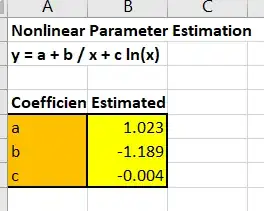First, notice the standard errors on the coefficients. The coefficient after adding gender is still within one-third of a standard error of the coefficient before adding gender. Although the sign has changed, these coefficients are actually quite similar to each other. Also, because the coefficient is much smaller than the standard error, the substantive conclusion doesn't change when adding gender: either way, there isn't enough evidence to claim the focal variable has an effect on the odds of the outcome.
I've argued that you shouldn't take the coefficients on the focal variable seriously, but if you did want to take them seriously, there are a few reasons why the coefficient on a focal variable might change when adding a covariate. In logistic regression, if a covariate is associated with the outcome, its inclusion will often change the coefficient on the focal variable, even if it's not associated with the focal variable. This is the problem of noncollapsibility and is one reason to avoid logistic regression models. If a covariate causes both the focal variable and the outcome, then it is a confounder; its exclusion will yield a biased estimate of the effect of the focal variable, so it must be included to meaningfully interpret the focal variable's effect as causal. Adding a confounder into a logistic regression model will change the model coefficients; the direction and magnitude of the change depend on the pattern and strength of the conditional associations among the covariate, focal variable, and outcome. There's nothing particularly interesting about a sign change; it's just a thing that can happen.
Taking a closer look at your data, it seems that the number of observations also decreased when you added the last two variables, indicating you probably have missingness on those variables and you used casewise deletion (i.e., threw out those observations with missing values). If missingness is related to the outcome or the focal variable, discarding missing observations can bias any estimates from the model. There are other, more valid ways of addressing missing data, but they require some assumptions (which are weaker than the assumption that missingness is unrelated to the outcome). Because of the deletion of cases, I would be extremely cautious in interpreting the last two models; they only have half the number of participants as the other models. This is the most likely reason you are seeing changes in the coefficients.
